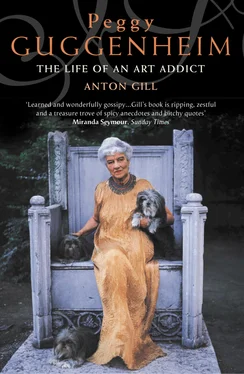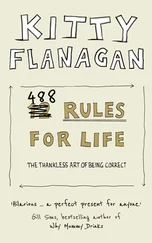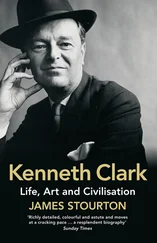As for education, Meyer, unlike his wife not particularly observant of his faith, chose the best for his children, regardless of religious affiliation, and they were sent to Catholic day schools, which paved the way for their disassociation from the religion and mores of their forefathers. Though Ben and William enjoyed the advantages of further education, only William showed any serious propensity for scholarship; the others were encouraged by their father to enter the family firm as soon as they could, and learn business through hands-on experience. The older boys, who worked hard alongside their father, were later aggrieved when Meyer decided to divide profits equally between all his sons; but Meyer countered their objections by pointing out that in time it would be the younger ones who would carry the burden of the work. He alluded to another piece of peasant wisdom: a bundle of sticks cannot be broken: individually, the sticks can be broken. The older boys knuckled under, but were not reconciled.
In the 1870s, having made small fortunes by the standards of the time in ventures as diverse as lye (used in soap-making) and the burgeoning railroads, Meyer turned his attention to lace. In 1863, all proscriptive laws against the Jews in Switzerland had been repealed, and one of Barbara’s uncles had established a lace factory back home. With a supplier established, Meyer now entered the lucrative lace business. His flair for diversification once again paid off, to the extent that by 1879 he was worth approaching $800,000. But his greatest gamble was yet to come. Two years later he was offered a third of the interest in two silver and lead mines outside the boom town of Leadville in Colorado by a Quaker friend, Charles Graham. Graham had borrowed money to buy two-thirds, but the mines, called the ‘A.Y.’ and the ‘Minnie’ after the original prospector and his wife, who had sold out for very little, were not doing well, and Graham couldn’t afford to repay the loan on half his share when it became due. William Guggenheim records that Graham’s price was $25,000, though it may have been as little as $5,000 – sources differ. In any event Meyer, who knew nothing about mining, thought it was worth the risk. His other partner was one Sam Harsh.
Before too long Meyer made his way to Leadville, in the wake of the disturbing news that the mines were flooded. To pump them out would cost $25,000, more than his two partners could afford. Meyer hesitated, but reflected that after all the investment in relation to his capital was still relatively small – and maybe too he was following what had so far proved to be an unerring instinct. He had steam-pumps developed for the job, the forerunners of a hydraulic power system which would be the cornerstone of his son Benjamin’s later business interests. He bought out his partners, had the mines cleared and repaired, watched the expenses mount, and worried and waited. But he didn’t have to wait long. In August 1881 rich seams both of lead and silver were struck. Soon the mines were bringing in $200,000 a year; by the end of the decade the yield had risen to $750,000.
Based on his experience with stove polish, Meyer saw that if he established his own smelting business, he need not pay anyone to process his ore for him. With the help of his then twenty-three-year-old son Benjamin, a smelter was established at Pueblo at the end of 1888. In the same year the family moved to a new home and new offices in New York, which had by now gained the ascendancy over all other cities in the east as the centre of commerce.
Lace was forgotten. Mining became the centre and the soul of the Guggenheim firm. The world was its unexploited oyster, and with the funds available to them over the years that followed they would gain control of the American smelting industry, and expand their mining operations to Mexico, Chile, Alaska and Angola. Profits would run into the hundreds of millions. They were not always good or ethical employers, their business practice could be sharp, and in those days nobody gave a damn about the ecological effects of mining operations; but they were phenomenally successful. Simply as a family they were formidable: Meyer and Barbara had to remember the birthdays of twenty-three grandchildren. The Guggenheim fortunes would continue to prosper until Peggy’s generation, less interested in business, came into its own.
Barbara, who had contracted diabetes, died on 20 March 1900. Ben and Will pulled out – and were partly pushed out – of the family firm soon after. The other brothers were only too happy to be rid of the interference of their pampered, college-educated siblings, whose ideas of how to run the business clashed with their own. Furthermore, Will, who fancied himself something of a ladies’ man, had blotted his copybook by making a very ill-advised marriage late in 1900, to a woman of dubious virtue. The older brothers coerced him into divorce, but then had to stump up a hefty $78,000 to satisfy the aggrieved ex-wife, although the whole business dragged on for another thirteen years, and in 1904 even threatened to bring scandal upon Will’s second and only slightly more successful marriage. Ben and Will were left with handsome incomes and some interest in the business, but only as far as it had come by the turn of the century. They were cut off from the vast amounts that would accrue to the Guggenheim companies after 1900.
Meyer, growing old, increasingly left the reins of the business to his son Daniel, dabbling in the stock exchange as a means of recreation. ‘When my grandmother died,’ Peggy wrote, ‘my grandfather was looked after by his cook. She must have been his mistress.’ This is a typical Peggy-ism, and need not necessarily be true – she always loved amorous intrigue. ‘I remember seeing her weep copious tears because my grandfather vomited. My one recollection of this gentleman is of his driving around New York in a sleigh with horses, he was unaccompanied and always wore a coat with a sealskin collar and a cap to match.’ The cook-mistress may be an exaggeration by Peggy, but a woman servant called Hannah McNamara sued Meyer for $25,000 shortly after Barbara’s death, claiming to have been his mistress for the past twenty-five years. Meyer denied the whole thing, and the unfortunate business blew over; but the servant’s allegations are not outside the bounds of possibility, and most of Meyer’s sons had one mistress or more at some stage in their lives.
But if there was someone who consoled him during his final years, Meyer kept her secret. He died in Florida, where he’d gone to recover from a cold, in 1905, nearly five years to the day after Barbara.
When Ben Guggenheim successfully wooed and won Florette Seligman in 1894, his family was already substantially richer than hers. But the Seligmans, though they had only arrived in the States about ten years earlier than the ‘Googs’, formed part of the Jewish élite of New York, and looked down on the family which had made so much money from mining and smelting. A Seligman family telegram to cousins back home in Germany may have been deliberately miswritten to show their contempt: ‘FLORETTE ENGAGED GUGGENHEIM SMELT HER’. However, no objection was raised to the match. No one could fail to respect the Guggenheim wealth, or the speed with which it had been made. Benjamin was a bit of a dandy and a bit of a womaniser; he had a warm personality and a delightful smile. Florette was on the plain side and her temperament was difficult. But from each family’s point of view, the union was advantageous.
Despite the difference in the status of the two families in New York, the story of the Seligman origins is remarkably similar to that of the Guggenheims. The little town of Baiersdorf lies midway between Bamberg and Nuremberg in Franconia, Germany. There was a Jewish community there from at least the mid-fourteenth century, and the last Jews belonging to it were deported to a concentration camp in Poland, where they died, in 1942. A large Jewish cemetery remains, and the town, as so many in Germany do, has its Judengasse – Jews’ Street. The Seligmann family – they would drop the second ‘n’ on arrival in America – arrived in Baiersdorf around 1680. In 1818 David Seligmann, a local weaver, married Fanny Steinhardt. The couple set up house in the Judengasse , and over the next twenty years produced eight sons and three daughters, just as the Guggenheims had done. Today there is a Seligmannstrasse in Baiersdorf, and a David and Fanny Seligman Kindergarten , endowed by the family.
Читать дальше












